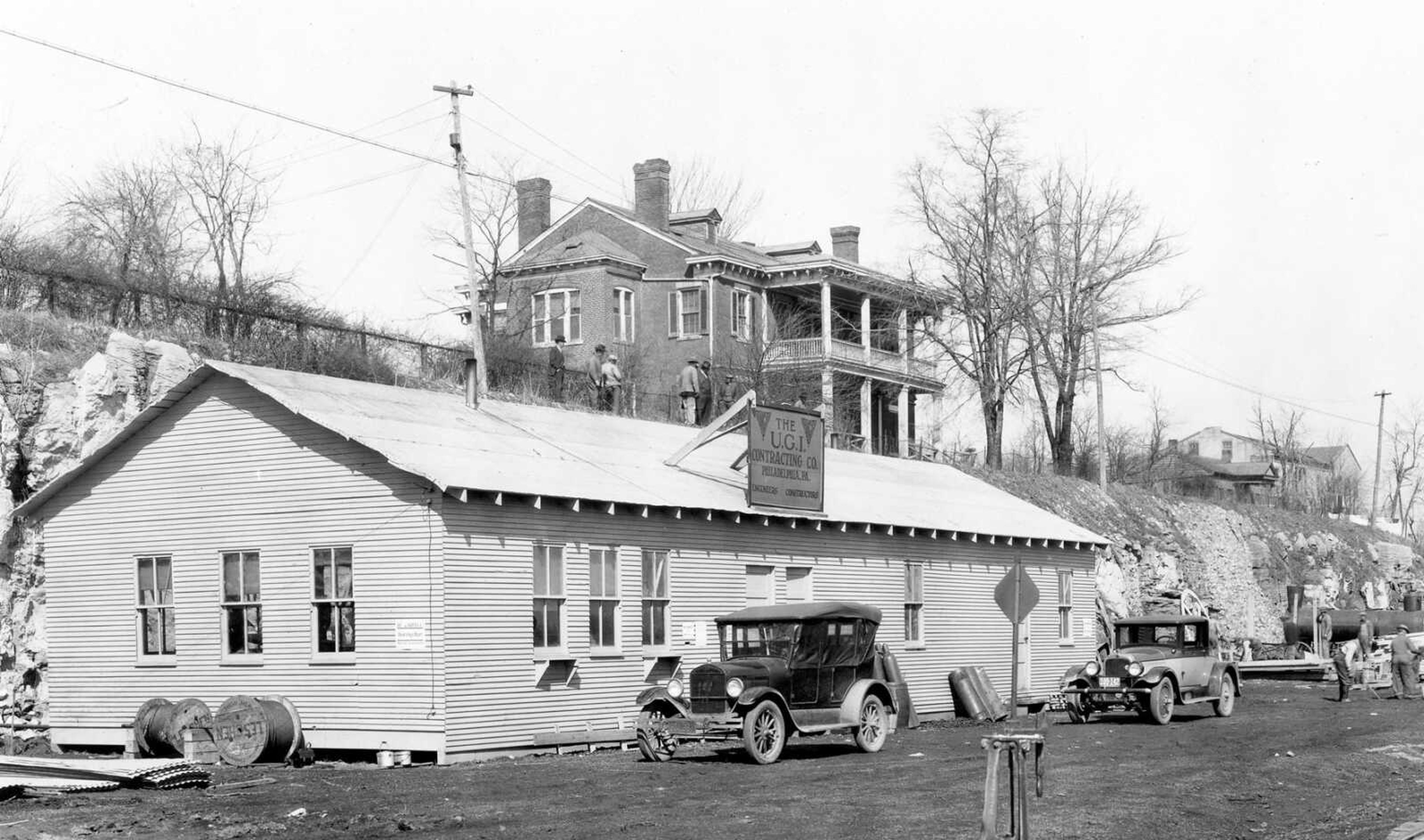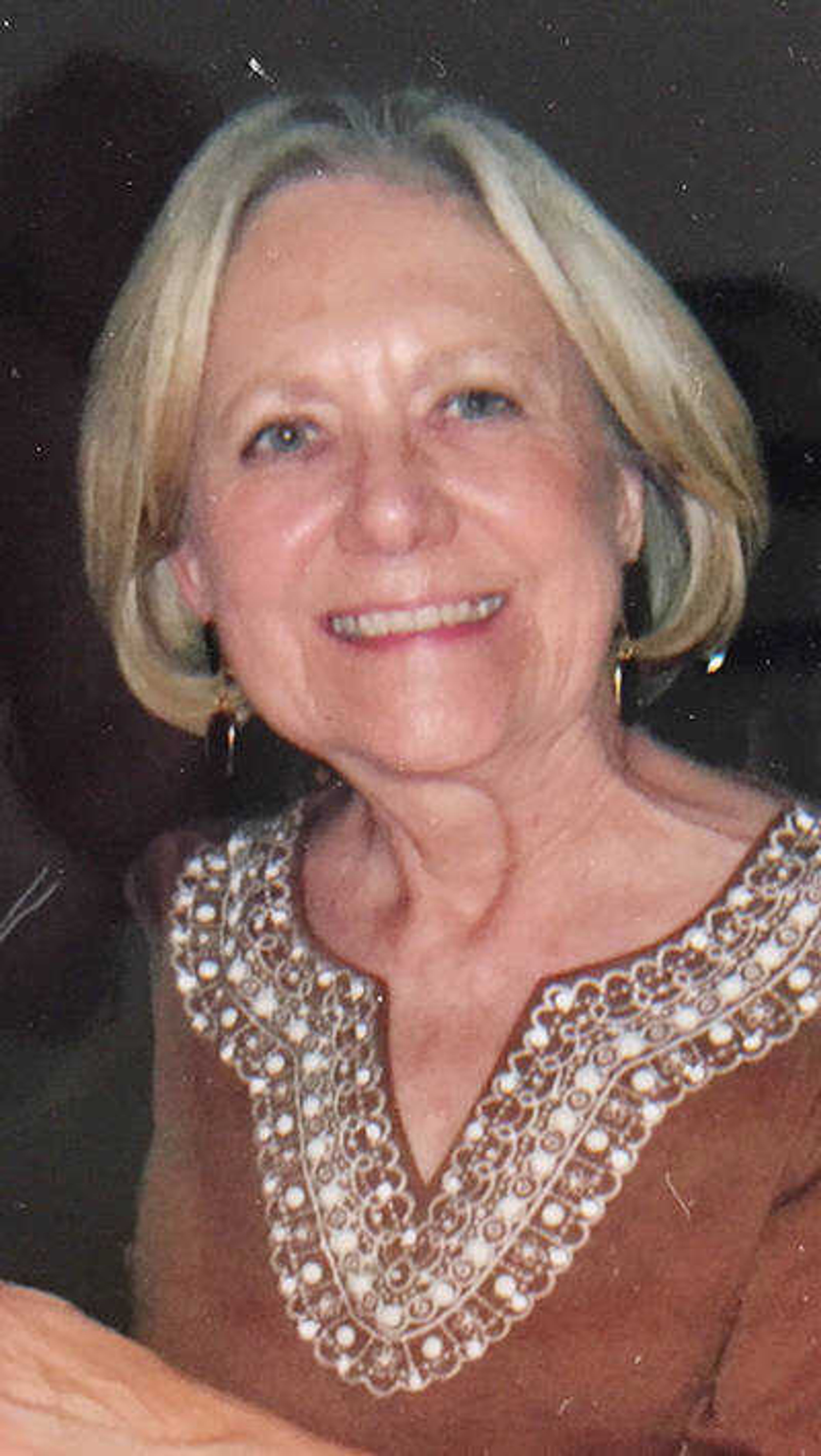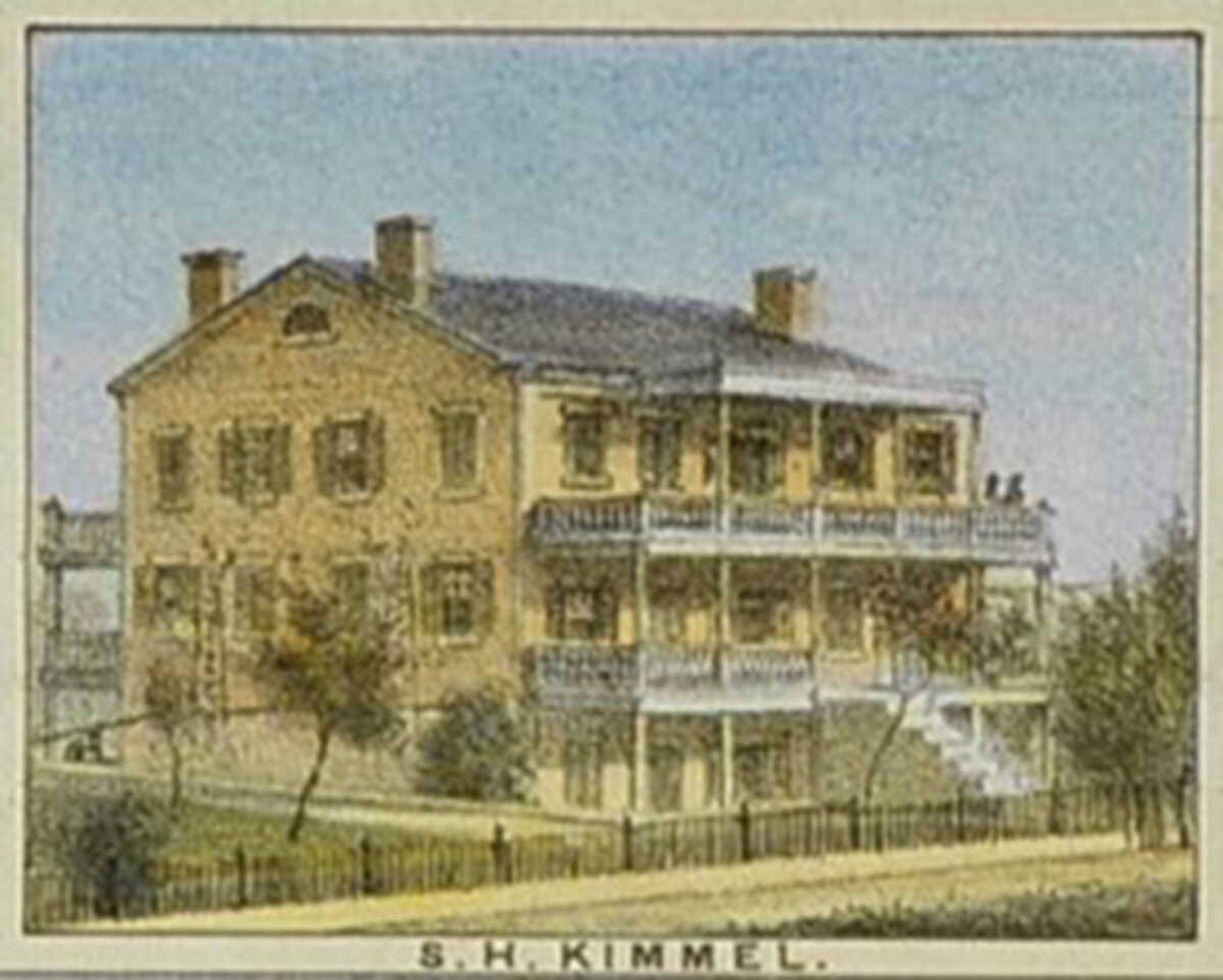Singleton Husband Kimmel was born into a family of patriots. His father, Dr. Peter Kimmel, fashioned cannon balls in his forges near Pittsburgh for the War of 1812. Unfortunately, Singleton's mother, Phoebe died during his birth in 1797.
As a young boy, Singleton loved creeks and rivers and soon learned the river could be a catalyst for a lucrative career. At 17 he took a flatboat with merchandise by the Ohio and Mississippi to Kaskaskia, Illinois. Attracted to the opportunities of the area, Singleton established several stores throughout Illinois, which he stocked with merchandise from the East. His headquarters became St. Louis. While living there, he became active in politics and was elected a member of the city council from 1840-50.
At 33, Singleton married Caroline Manning of Perry County, Missouri. She gave birth to Julia, but died in childbirth with son, Manning. She is buried at St. Mary's of the Barrons Cemetery.
The Kimmels' home sat on the picturesque banks of Apple Creek along with the Kimmel Mill. While there, Kimmel was elected as judge of the Perry County Court.
Shortly after his wife's death, Singleton headed back East and married Sarah Gorgas in Philadelphia in 1836. After returning to Missouri, the couple had George and Edward and daughter, Cora, born at Apple Creek.

At this point, Kimmel continued to operate his Apple Creek mill. However, the family decided to move to Cape Girardeau in 1857 and purchase Rockport Hall, continuing his love of rivers.
Singleton expanded his successes, owning real estate in Jackson County, Illinois; Southeast Missouri and St. Louis, where he owned another home.
While the Kimmels lived at their Spanish Street residence, they enjoyed a lifestyle of wealth. Cape Girardeau County probate records show six pages of assets appraised upon his death. A few of these were bay horse and carriage, sofas, velvet carpets, piano, paintings and an extensive library. Fine foods were purchased from Kimmel & Entler, owned by his son, George, and his daughter, Cora's, husband.
Born into slavery in 1816, Mary Ann Horrell along with her children were freed by Ben Horrell in 1855. Never leaving Rockport, she wished to stay on as the Kimmels' most trusted household servant.
Rockport, with porches facing east and west, had a prime view of the activities of the northern occupation during the Civil War. One day during the war a Confederate was hanged close to Painter Springs on the west side of town. Some men carried him down to Rockport's front porch. Mr. Kimmel came out and said, "Gentlemen, bring him in the parlor." Kimmel had him barbered and made ready for burial in the cemetery. (From "Miss Mary Remembers" by Mary Langlois.)
Kimmel died March 17, 1868, of face cancer and was buried with a large monument in Old Lorimier Cemetery.
Louis Klosterman, postmaster and businessman, purchased the home in 1902 for $10,000.
Upon their deaths, the Klostermans' estate sold the mansion to the Knights of Columbus, who had it razed in 1935.
Connect with the Southeast Missourian Newsroom:
For corrections to this story or other insights for the editor, click here. To submit a letter to the editor, click here. To learn about the Southeast Missourian’s AI Policy, click here.










